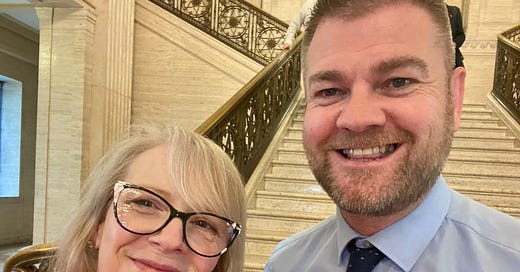Hey there! If you’re reading this, you probably know how crucial it is to have a solid public affairs strategy in place. Whether you're running a business, heading up a non-profit, or navigating the complex world of government relations, getting your public affairs right can make all the difference. It’s all about building relationships, influencing policy, and making sure your organisation is heard where it matters.
Let’s dive into the four key elements that will help you craft a winning public affairs strategy.
1. Nail Down Your Public Affairs Objectives
First things first: you need to get crystal clear on what you want to achieve. Think of your public affairs objectives as your guiding stars. They should align with your broader goals as an organisation. To figure these out, ask yourself:
What issues could impact us? Start by identifying the public policy issues, regulations, or societal trends that might affect your operations, reputation, or market position. These could be anything from environmental regulations to new tax laws or trade policies.
What’s our endgame? Be specific about what success looks like. Are you trying to influence a piece of legislation, secure some government funding, boost your public image, or build stronger ties with the local community?
How do these objectives tie into our bigger picture? Your public affairs objectives shouldn’t exist in a vacuum. Make sure they’re directly supporting your overall organisational goals. For example, if you’re expanding into new markets, you might focus your public affairs efforts on understanding the local regulatory landscape and building relationships with key government figures in those areas.
Once you’ve got your objectives figured out, it’s time to prioritise. You can’t tackle everything at once, so focus on what’s most critical to your success and allocate your resources accordingly.
Ellen catching up with Colin McGrath. Colin’s podcast is dropping this Tuesday!
2. Identify Your Key Stakeholders and Influencers
With your objectives set, it’s time to think about who can help you achieve them—or who could stand in your way. Stakeholders and influencers are those individuals or groups that have the power to impact your public affairs efforts. Here’s who you should be thinking about:
Government officials and policymakers: These folks are often your direct route to influencing public affairs. Whether it’s local councillors, MPs, or government agencies, they hold a lot of sway.
Industry associations and trade groups: These organisations often have significant influence and can either be your best allies or your toughest opponents.
Community leaders and activists: Especially important if your goals involve local issues, these people can be key players in getting your message across.
Media and thought leaders: Journalists, bloggers, and social media influencers can shape public opinion and bring attention to your cause.
Employees, customers, and shareholders: Don’t forget the internal stakeholders. Their support (or lack of it) can be a big factor in your success.
Take some time to map out your stakeholders. Who are they? What are their interests? How do they feel about your objectives? Understanding what makes each group tick will help you tailor your approach and get them on your side.
Keep reading with a 7-day free trial
Subscribe to Policy360 Substack to keep reading this post and get 7 days of free access to the full post archives.





